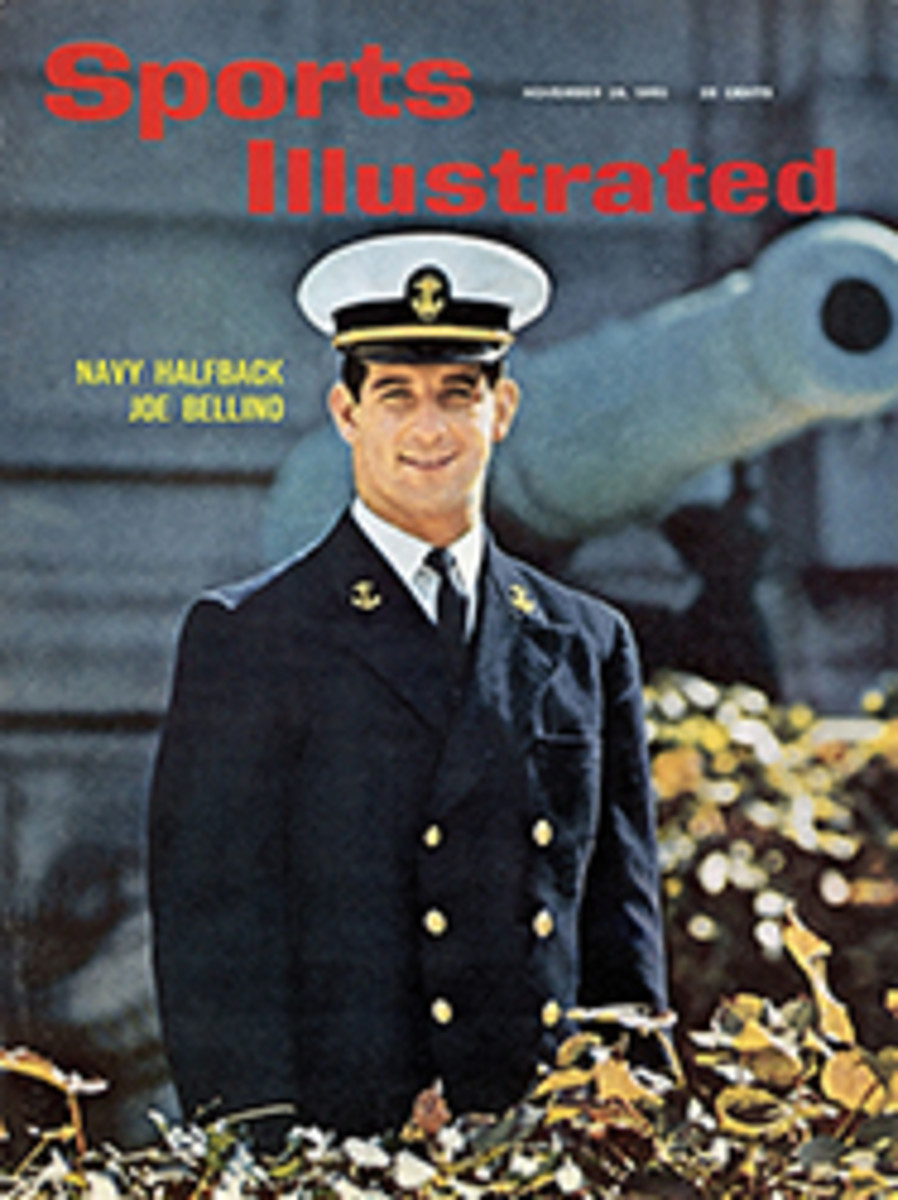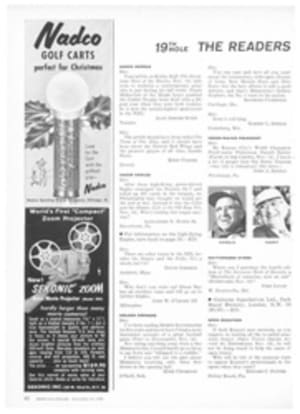
THE BIG RACE MOVES WEST
There is no stopping California in its push for major league sports status. Following football, baseball and basketball, Grand Prix automobile racing, to the delight of 20,000 pioneering spectators, came to California this week for the first time.
This was not the bright, flashy sports car racing for which the Coast is already notable, but the very best in international road racing: pure, single-seat racers unburdened by the fenders and headlights of the sports car, all the world's best road racing drivers together for a world championship event.
It was only the second such race in the U.S.—a plum plucked from Se-bring in rival Florida, where the inaugural U.S. Grand Prix was run last year.
California's Grand Prix took place on a twisty 3.3-mile course that cuts along the arid hills on the fringe of the state's southern deserts near the town of Riverside, an hour's fast drive from Chavez Ravine. For an opener, it was excellent. Britain's incomparable Stirling Moss, the winner, was at the top of his form, and it included one of the most exciting of all racing ornaments, the stern chase. Doing the chasing was the world champion himself, Jack Brabham of Australia, who got behind in the early stages because his car exasperatingly kept catching fire. When the trouble was finally cleared up, Brabham was in 16th place, but he refused to quit, and had actually clawed his way all the way up to fourth by the end of the 246 miles.
The race, moreover, was a historic one. It marked the end of a Grand Prix era, a seven-year span during which engine-displacement sizes were pegged at 2.5 liters (a little more than 150 cubic inches). This was an era that opened with a German Mercedes blitz, saw supremacy go to Italian Ferraris and Maseratis in the middle years and now closes with the English in absolute command. At Riverside the only serious entry not wholly English or built with an English chassis was the American Scarab, created for Lance Reventlow.
Beginning next year, Grand Prix engines drop in size to 1.5 liters and finished cars may weigh no less than 990 pounds. Most English racing men, Moss conspicuously included, are outraged over the new rules. They feel that the Continental majority in the FIA, ruling body of road racing, will rob Grand Prix sport of much of its speed and spectacle, while not necessarily advancing racing safety, the official reason behind the move.
It is not surprising that they are agitated. Countries that could not or would not try to catch up with the English in 2.5-liter racing—principally Italy, with its forthcoming rear-engined Ferraris, and Germany, with its Porsches—will be formidable 1.5-liter opponents. The Ferraris and Porsches are likely to have higher horsepower ratings than the English Coopers, Lotuses and BRMs—as, indeed, do the current mediocre 2.5-liter Ferraris, which ducked Riverside—and the weight restriction handcuffs the English genius for ultralight yet smooth-handling chassis.
But that concerns the future. Last Sunday the English had a high old fling at Riverside, and so did the California witnesses. The fraternity of car cultists was out in force—in spoke-wheeled antique Chevys, flute-fendered Fords, vintage MGs. There were bearded young men with Rollei cameras around their necks, cotton-headed starlets, and tycoons in land-cruiser buses complete with bars and butlers. Considering the quality of the event, the wonder was that more spectators weren't there.
One reason may be that California has been overfed on road racing in recent weeks, many of the internationally famous drivers having shown up for major sports car races last month at Riverside and Laguna Seca. No doubt, too, a good many citizens who cheer Willie Mays and Larry Sherry haven't caught up with road racing and the marvelous skills of the Mosses and the Brabhams.
Here is what they missed. First of all, the sight of Moss flinging his Lotus around challenging corners as buoyantly and neatly as Sam Snead swings his big driver on a golf tee. In this race Moss mischievously intended to trade customary roles with Brabham, who had already clinched the world driving championship by winning five straight races in Europe. Moss, the perennial front-runner, decided to follow close behind the leader—whom he expected to be Brabham—for three-quarters of the race. He then proposed to move up and challenge Brabham all the way to the finish. These are Brabham's usual tactics to the letter, but unfortunately the Australian found himself in no position to accommodate Moss even if he had wanted to.
Brabham burst into the lead at flagfall, and Moss motored along behind him for the first four laps. But on lap five Brabham's little green Cooper rolled in for the first of two pit stops to combat a fuel leak into the car's bellypan.
"Every time the petrol hit the exhaust pipes," Brabham said, "the flames blew me out of my seat."
As Moss took the lead Brabham dropped down through the 23-car field to 16th place on lap 12. There he finally had everything sorted out and was ready to pursue Moss.
Brabham's handicap inspired in him a determination that must always be there but which he rarely shows. Summoning up his deepest reserves of skill and courage, he prevented the race from deteriorating into a simple runaway dash by the gifted Moss.
Fast, futile chase
At the finish Brabham was making up four seconds a lap on Moss, although he hadn't a chance of catching him, and was breathing hard on the third-place man, his teammate Bruce McLaren. (McLaren, a New Zealander, placed second for the season in the world rankings and Moss third.) Ahead of McLaren and 38 seconds behind Moss at the end was Britain's Innes Ireland in a Lotus. Finishing fifth, the Swede Joakim Bonnier complained, partly in anger and partly in wonder, about Brabham's bare-knuckle tactics in slamming past him to get into fourth place.
Moss, who hadn't been aware of the commotion behind him, said he was surprised the victory had been so easy. He was piqued to discover that Brabham had achieved the fastest lap of the day during the long chase, and aggrieved that his pit men hadn't so informed him so that he might have tried for the distinction himself. A proud man, Moss is jealous of his reputation as the world's fastest Grand Prix driver. But he really needn't have worried. Moss's winning average speed was a record-breaking 99 mph for the 75 laps. As long as England has him, in English cars, it may take more than a horsepower edge to swing the balance of racing power to the Continent.
PHOTO
PHIL BATH
COMING OUT OF S TURN, JACK BRABHAM (2) HAS EARLY FIVE-YARD LEAD ON STIRLING MOSS AS DAN GURNEY HOLDS THIRD PLACE
PHOTO
PHIL BATH
FAR IN LEAD, A CONFIDENT AND COMPOSED MOSS STEERS LOTUS TOWARD FINISH

